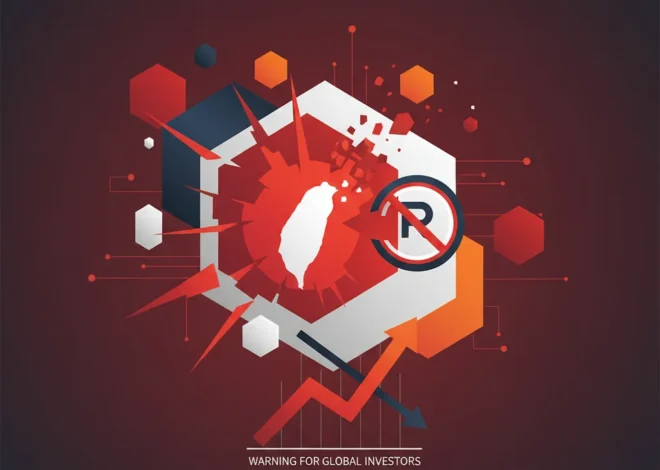
The Murdaugh Dynasty: A Cautionary Tale of Financial Ruin and the High Cost of Reputational Risk
The story of the Murdaugh family, recently dramatized in the Disney+ series Murdaugh: Death in the Family, has captured the public’s imagination as a chilling southern gothic saga. As a review in the Financial Times notes, it’s a compelling “study in wealth, privilege and justice.” Yet, for those in the world of finance, investing, and business leadership, the Murdaugh collapse is more than just true-crime entertainment. It is a critical and cautionary case study in the catastrophic failure of governance, the illusion of reputational security, and the devastating financial consequences of unchecked power.
Beneath the lurid headlines of murder and a family undone lies a multi-decade, multi-million-dollar financial fraud that offers timeless lessons for anyone navigating the complexities of the modern economy. The story of Alex Murdaugh is not just about the tragic loss of life; it’s about the systematic erosion of trust, the weaponization of prestige, and the ultimate implosion of a financial dynasty built on a foundation of deceit.
The Illusion of the Blue-Chip Brand: When Legacy Masks Liability
For a century, the Murdaugh name was the gold standard in South Carolina’s Lowcountry. It was a brand synonymous with legal power, political influence, and generational wealth. The family’s law firm, founded in 1910, was a regional institution. For three generations, a Murdaugh served as the 14th Circuit Solicitor, the chief prosecutor for a five-county region. In the world of finance and investing, the Murdaugh name was akin to a blue-chip stock—stable, reliable, and seemingly immune to market volatility.
This powerful brand became Alex Murdaugh’s primary tool for his complex financial crimes. He leveraged his family’s reputation to lull clients, colleagues, and even entire banking institutions into a false sense of security. Investors and business leaders can draw a direct parallel to the importance of looking beyond a company’s public-facing brand. A celebrated CEO, a storied corporate history, or a soaring position on the stock market can often mask deep-seated operational and ethical rot. The Murdaugh case is a stark reminder that legacy is not a substitute for rigorous, ongoing due diligence.
Murdaugh’s scheme was not a high-tech assault on the financial system. He didn’t use sophisticated trading algorithms or exploit loopholes in financial technology. His methods were deceptively old-fashioned, relying on the one currency that predates any form of fintech: personal trust. He exploited the very human tendency to defer to authority and reputation, a vulnerability that persists in any economic system.
Anatomy of a Financial Fraud: Deconstructing the Deceit
The scale of Alex Murdaugh’s financial misconduct is staggering. Over years, he systematically stole millions from his clients, his partners, and his own family. His primary method involved diverting settlement funds intended for vulnerable clients—including the family of his deceased housekeeper, a quadriplegic man, and numerous accident victims—into a fraudulent bank account.
He established an account with Bank of America under the name “Forge,” a name deceptively similar to Forge Consulting LLC, a legitimate company that handles settlement structures. He would then convince clients to write checks to this account, which he controlled completely. According to the indictments filed against him, Murdaugh faced nearly 100 charges related to his financial schemes, totaling almost $9 million in stolen funds. This highlights a critical failure in the banking and legal oversight systems, which were unable or unwilling to question the actions of such a powerful figure.
The following table provides a simplified overview of some of the key financial crimes Murdaugh has been convicted of or charged with, illustrating the breadth and audacity of his schemes.
| Victim(s) | Scheme Details | Approximate Amount Stolen |
|---|---|---|
| Gloria Satterfield’s Heirs | Diverted a $4.3 million insurance settlement intended for the sons of his deceased housekeeper into his fraudulent “Forge” account. | $4,300,000 |
| Hakeem Pinckney / Pamela Pinckney | Stole settlement funds from a deaf quadriplegic man and his family following a catastrophic car accident. | $1,150,000+ |
| Law Firm Partners (PMPED) | Allegedly stole fees and other funds directly from his own law firm over the course of a decade. | $4,800,000+ |
| Arthur Badger | Siphoned money from a settlement after his wife died in a car crash, leaving him as a widower raising six children. | $1,300,000 |
Source: Data compiled from various reports, including The State newspaper’s coverage of the indictments.
This breakdown underscores a fundamental lesson in risk management: the most significant threats often originate from trusted insiders. While external threats like market crashes and cyberattacks dominate headlines, internal fraud, particularly at the leadership level, can be just as, if not more, devastating.
Lessons for Investors, Executives, and Finance Professionals
Beyond the courtroom drama, the Murdaugh saga offers a potent curriculum for anyone in a position of financial responsibility. The takeaways are not just theoretical; they are actionable principles that can protect assets, reputations, and careers.
1. Reputational Risk is Quantifiable Financial Risk
The Murdaugh “brand” was the family’s most valuable asset, built over a century. Its complete and utter destruction was not a byproduct of the crisis; it was the crisis itself. In today’s economy, a company’s reputation is directly tied to its valuation on the stock market. For investors, this reinforces the growing importance of Environmental, Social, and Governance (ESG) criteria. The “G” for governance, which Murdaugh so flagrantly violated, is not a soft metric. It is a hard indicator of long-term stability and risk. A failure in governance can wipe out shareholder value as swiftly as a disastrous earnings report.
2. The Imperative of Unwavering Due Diligence
Murdaugh’s law partners, the banks he worked with, and the legal system he operated within all failed to apply the necessary level of scrutiny, largely due to his esteemed status. For investors, this is a lesson in questioning assumptions. Whether evaluating a startup, a private equity deal, or a new fund manager, one must look past the polished resume and the impressive lineage. It is essential to verify everything, trust but verify, and create systems of checks and balances that are not dependent on the perceived integrity of a single individual.
3. The Danger of Concentrated Power and “Key Person” Risk
The Murdaugh legal dynasty was the epitome of “key person” risk. The family’s power was concentrated, insular, and lacked external accountability. This structure is a breeding ground for the kind of corruption that unfolded. In the corporate world, a similar danger exists in companies dominated by a single, charismatic founder or a board of directors lacking independent voices. Effective corporate governance demands a distribution of power, transparent reporting, and a culture where questioning leadership is not seen as an act of disloyalty but as a fiduciary duty.
The Economics of a Scandal
It is also worth noting the economic ecosystem that has sprung up around the Murdaugh case itself. The production of documentaries by major players like Disney+, Netflix, and HBO signifies a robust market for stories of financial and ethical collapse. This public fascination is not merely voyeuristic; it reflects a deep-seated anxiety within the broader economy. In an era of stock market volatility and growing wealth disparity, these stories serve as modern morality plays. They tap into a public desire to see accountability and to understand the forces that can lead to such spectacular falls from grace.
The monetization of this scandal through streaming services represents a unique facet of the modern media and finance landscape. The story of stolen millions has, in turn, become a multi-million-dollar content industry, a peculiar form of economic alchemy where the narrative of financial ruin becomes a profitable asset.
Conclusion: A Legacy of Ruin, A Lesson in Prudence
The Murdaugh family built a legacy over 100 years. Alex Murdaugh destroyed it in a decade. The story, as told on screen and in court, is a compelling human tragedy. But for the financial world, it is a critical business case. It demonstrates with chilling clarity that the most robust financial structures are only as strong as the ethics of the people who run them.
It is a powerful reminder that in finance, investing, and all forms of business, integrity is not a line item on a balance sheet, but the very foundation upon which it is built. Without it, as the Murdaughs learned, the entire edifice will inevitably collapse into ruin.


